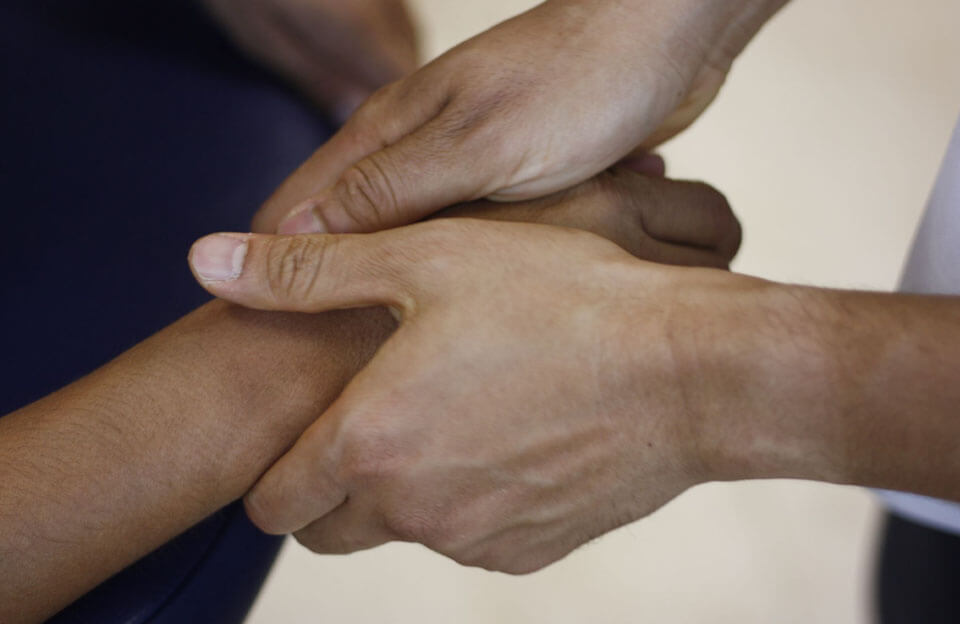The basic methods to control diabetes have been quite consistent over the years – insulin, diet, and medications to manage blood sugar. But diabetes still cannot be cured, and it’s no surprise that many people who have it are searching for other ways to manage or even cure it.
The pinch method is one of those other ways. It is supposed to lower blood sugar naturally. You pinch certain areas around the wrist or ankle that are supposed to correspond to particular acupuncture points in the body. These points stimulate the body to produce insulin, and your blood sugar returns to normal.
That’s the theory, at least. But does it work?
The History of Self-Acupressure
Most people are somewhat familiar with acupressure via acupuncture. The practice of acupuncture is based upon theories developed by traditional Chinese medicine (TCM). The basic theory TCM offers is that there are 14 meridians or channels that let energy (qi) flow through the body.
Along those meridians are 365 pressure points that can be used to correct imbalances in energy flow. Those points are stimulated through needles or pressure. In some cases, the needles are heated or used to deliver electrical current to those points. [1]
Modern practitioners are more likely to talk about endorphins than energy meridians. Endorphins are hormones produced by the brain as a reaction to pain or stress and work to reduce the levels of both. [2] Current research on acupressure proposes that acupressure points are points that can stimulate the brain to release endorphins and therefore reduce pain. [3]
As a result of this theory, acupressure is currently used primarily for pain management. A systemic review of acupuncture studies found that most of them had been conducted to determine whether acupressure was effective at relieving the pain of various conditions.
The results of those studies varied, but in most cases, the association between pain relief and acupressure was weak or not found, and even in the cases where it was found, the authors concluded more research was needed in that area. [4]
How to Use Pinch Method for Diabetes?
While there are several different acupressure points that are supposed to correspond to insulin and blood sugar, there is one method that is most commonly used: the Mongolian pinch. The Mongolian pinch consists of using the thumb and finger of one hand to pinch the area just above the wrist. Hold for thirty to sixty seconds, and then release. [5]
Other pressure points that have been proposed to lower blood sugar are the area 3 centimeters under the knee and inward, 5 centimeters above the lower leg and inward, the point where the big toe and second toe meet, and the ankle joint area. The methods for those points are the same as for the wrist method: hold for thirty to sixty seconds and release. [6]
Is Pinching Works for Diabetes?
Very little research has been done on whether the pinch method is effective for lowering blood sugar. One study found that compared those who used the pinch method (pressing below the knee joint) to those who did not found that the blood sugars in the pinch method group were lower than those for the control group. The groups were small (thirty people in total), and the groups were not blinded or randomized. [7]
Another study found that type 2 diabetics that used various pinch methods (below the knee, near the junction of the big toe and middle toe, and just above the ankle joint) found the pinch method group had lower fasting blood sugars and more insulin produced. The study had the same weaknesses as the previous study (small group, as only sixty people were included, and groups were not randomized), and none of the people in the study was currently injecting insulin to control their condition. [8]
A third study that looked at herbs injected into the same acupressure points used in the pinch method as a means to manage diabetes found that fasting blood sugars were lower in the group that received the treatment. However, the study’s authors were careful to note that the effects were modest, and there were no other noted effects on any other aspect of diabetes. They concluded that more research was needed. [9]
So does the pinching method work for diabetes? Two small studies say it might, and a third found that using herbs in some locations may have a small effect. That’s not a great deal of research (in contrast, a search of the PubMed database for insulin and diabetes shows over 200,000 studies), and as a result, it can’t be said to work definitively at this point.
Best Practices to do Pinch Method for Diabetes
Even with the limited evidence present that indicates the pinch method for diabetes is effective in lowering blood sugar, you may still wish to attempt it. Before you do so, remember that you should not, under any circumstances, attempt to modify your current diabetes treatments without the approval of your doctor.
The few studies that have been done have used the method once a day. Try this for a specific period of time (like one month) and then see if there is any change in your overall blood sugar. If there has not been, don’t feel the need to continue.
FAQ
What is the Difference between the Mongolian Pinch and Acupressure Pinch?
The Mongolian pinch method involves pinching the area above the wrist for sixty seconds. There are several other acupressure methods said to lower blood sugar, and they involve pinching below the knee, near the junction of the big toe and middle toe, and just above the ankle joint.
What are Alternative Treatments to Pinch Method?
Since there isn’t a lot of evidence that the pinch method works at all, any treatment for diabetes that has been shown to be effective can be considered an alternative to the pinch method. One study that examined herbs injected into the points used by the pinch method lowered blood sugar by a small amount, but the authors of the study said more research in the area was needed.
Can Acupressure Cure Diabetes?
The few points of research that have been done on self-acupressure and diabetes have had decidedly mixed results. While it might be the case that some of these methods can reduce blood sugar, there is absolutely no evidence that acupressure is able to cure diabetes.
Final Thoughts
Diabetes is often difficult to manage, and the various methods used to control it have varied in delivery over the years but haven’t changed much in themselves. So when you hear that pinching your skin at certain points at various times in the day could help you manage your blood sugar, it might sound appealing.
And if you’re continuing to monitor your diet, give yourself insulin, and take any medications that you might be prescribed, using any of the above pinch methods probably won’t do you any harm.
But there isn’t enough evidence to say the pinch method can lower blood sugar, and deciding to forgo the above treatments in favor of it could lead to disaster.
References
- Ernst, E. (2006). Acupuncture–a critical analysis. Journal of Internal Medicine, 259(2), 125–137. https://doi.org/10.1111/j.1365-2796.2005.01584.x
- Cleveland Clinic. (2022, May 19). Endorphins: What They Are and How to Boost Them. Cleveland Clinic. https://my.clevelandclinic.org/health/body/23040-endorphins
- Wang, S.-M., Kain, Z. N., & White, P. (2008). Acupuncture Analgesia: I. The Scientific Basis. Anesthesia & Analgesia, 106(2), 602–610. https://doi.org/10.1213/01.ane.0000277493.42335.7b
- Allen, J., Mak, S. S., Begashaw, M., Larkin, J., Miake-Lye, I., Beroes-Severin, J., Olson, J., & Shekelle, P. G. (2022). Use of Acupuncture for Adult Health Conditions, 2013 to 2021: A Systematic Review. JAMA Network Open, 5(11), e2243665–e2243665. https://doi.org/10.1001/jamanetworkopen.2022.43665
- Ltd, H. P. (2022, June 7). What Is The Pinch Method For Type 2 Diabetes? HealthMatch. https://healthmatch.io/type-2-diabetes/what-is-the-pinch-method-for-type-2-diabetes#what-can-i-do-to-lower-blood-sugar
- Ltd, H. P. (2022, June 7). What Is The Pinch Method For Type 2 Diabetes? HealthMatch. https://healthmatch.io/type-2-diabetes/what-is-the-pinch-method-for-type-2-diabetes#what-can-i-do-to-lower-blood-sugar
- Fitrullah, & Rousdy, A. (2017). Effectiveness of Acupressure at the Zusanli (ST-36) Acupoint as a Comfortable Treatment for Diabetes Mellitus: A Pilot Study in Indonesia. Journal of Acupuncture and Meridian Studies, 10(2), 96–103. https://doi.org/10.1016/j.jams.2016.12.003
- Zarvasi, A., Ansari Jaberi, A., Negahban Bonabi, T., & Tashakori, M. (2018). Effect of self-acupressure on fasting blood sugar (FBS) and insulin level in type 2 diabetes patients: a randomized clinical trial. Electronic Physician, 10(8), 7155–7163. https://doi.org/10.19082/7155
- Lee, S.-W., Nam, M.-H., & Lee, B.-C. (2017). Herbal acupuncture for type 2 diabetes: A meta-analysis. Experimental and Therapeutic Medicine, 13(6), 3249–3256. https://doi.org/10.3892/etm.2017.4379


